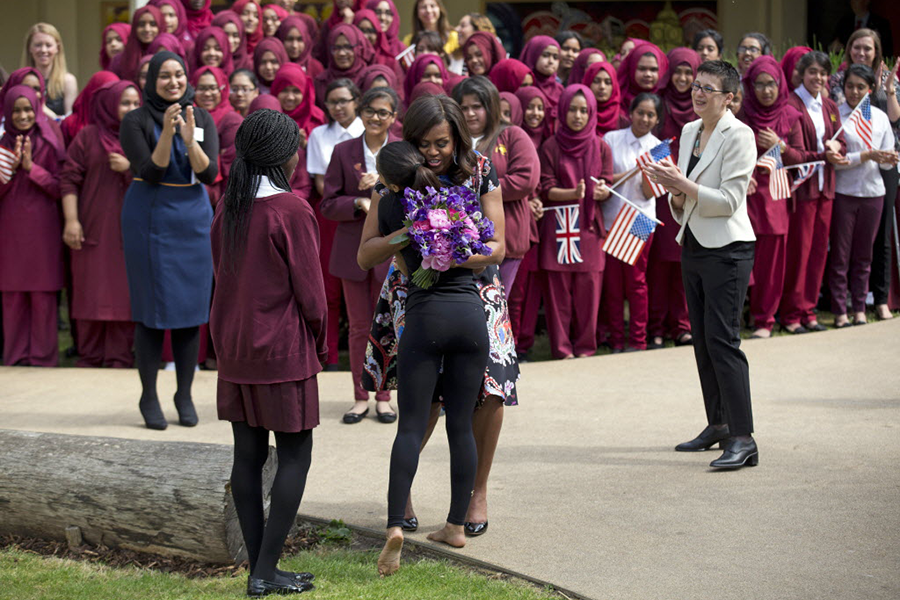FLOTUS tea party: Why Michelle Obama takes tea with Prince Harry
Loading...
What does a first lady do when visiting the UK?
Have tea with a prince in a royal palace, of course. That's how first lady Michelle Obama started her two-day visit to London with her mother and daughters – tea with Prince Harry at Kensington Palace.
Mrs. Obama met Prince Harry to discuss veterans issues and to promote "Let Girls Learn," her program to advance girls' education around the globe.
While details of her Tuesday morning tea with Harry weren't revealed to the public, her visit to a school in East London was.
Obama visited the Mulberry School, the AP reports, where she was visibly moved as uniformed schoolgirls, many from working class backgrounds, greeted her with song, interpretive dance, and excited squeals.
"The world needs more girls like you growing up to lead our parliaments and our board rooms and our courtrooms and our universities," she told the students at Mulberry School. "We need you."
During her visit, Obama is expected to announce a new $200 million US-UK partnership to support girls' education in countries affected by conflict, including the Democratic Republic of the Congo, Sierra Leone, and Liberia. Launched in March, the Let Girls Learn initiative will support teacher training, girls' leadership camps, and other community-based programs around the world.
"Right now, more than 62 million girls around the world are out of school – a heartbreaking injustice that deprives these girls of the chance to develop their potential," Obama explained in an editorial in the Financial Times.
In her editorial, she cited unaffordable school fees, early and forced marriages and pregnancies, as well as societal beliefs that girls are simply less worthy as some of the factors holding girls back.
Educating girls isn't just a moral issue, but a public health issue, a national security issue, and an economic issue, Obama argued, making the case that educating girls leads to lower rates of maternal and infant mortality, combats violent extremism, and can boost both individual earning power as well as an entire country's economy.
For Obama, it's also a personal issue.
She was born in a modest home on the south side of Chicago, where her father, Fraser C. Robinson III, a former boxer and soldier, spent his life tending boilers at the city’s water plant. Obama's mother, Marian Robinson, who never attended college, "obsessed" with getting her own two children into the best colleges.
"My parents told me every day I could do anything," the first lady told the students at Mulberry School, adding that at the time there were few black women in positions of power. "I could grow up to be a doctor, a lawyer a scientist, whatever, but only if I worked as hard as I could to succeed in school ... they knew that a good education was the ultimate key to our success."
Of course, Mrs. Obama went on to study at Princeton and Harvard, become a hospital executive, run an NGO, and live in the White House as first lady.
“Those kinds of achievements seemed totally out of reach when I was growing up. I was just a working class kid,” she said, “The fact that I was a girl and I was black – that certainly didn’t help things, either.”
“In so many ways,” she told the London students, many of whom come from working-class Bangladeshi Muslim backgrounds, “your story is my story.”
This is the second leg of the first lady's "Let Girls Learn" tour. In March, she traveled to Japan and Cambodia to announce a similar partnership between the two countries, as well as meet with schoolgirls there.
"Every time I meet these girls on my travels abroad, I am blown away by their passion, intelligence, and hunger to learn – and I cannot help but see my daughters in them," Obama wrote in the Financial Times. "Like my own girls, each of these young women has the spark of something extraordinary inside. The only difference is that my girls have had the opportunity to develop their promise."







